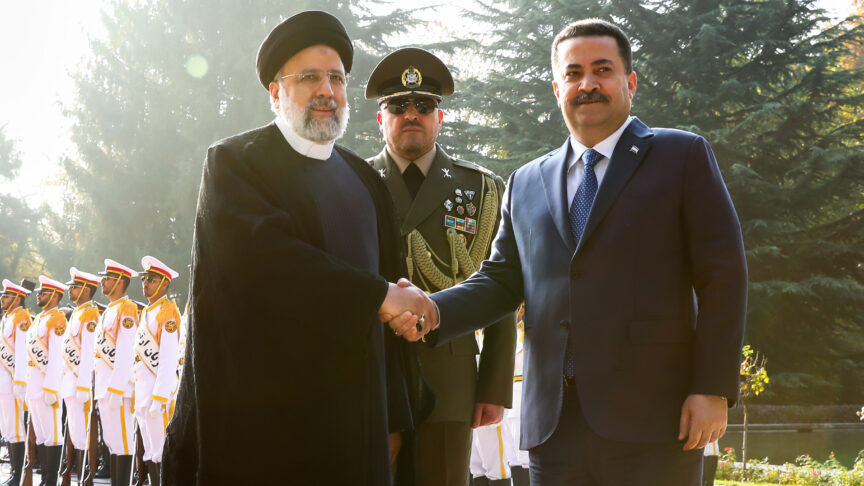Obama’s Drone Attacks: How the EU Should Respond
Despite President Obama extending its use of drone strikes in Pakistan, Yemen and Somalia, the EU has been largely silent on the issue. But European leaders need to press the US to establish credible international standards to govern their use.
Despite President Obama extending its use of drone strikes in Pakistan, Yemen and Somalia, the EU has been largely silent on the issue. But European leaders need to press the US to establish credible international standards to govern their use.
–
The US campaign of drone strikes against terrorist suspects recently claimed its most high-profile victim when Abu Yahya al-Libi, al-Qaeda’s second-in-command, was killed in Pakistan. To many people’s surprise, President Obama has dramatically stepped up the use of drone strikes by the United States since taking office three years ago. His administration now routinely carries out strikes in both Pakistan and Yemen, as well as in Somalia, far from any conventional battlefield in which US forces are fighting. The New York Times recently reported that Obama himself personally oversees decisions about who is placed on the “kill list” of individuals who can be targeted.
Drone attacks are popular in the United States, and Obama’s aggressive approach to al-Qaeda is widely seen as an asset in his bid for re-election this year. But in Europe public opinion is firmly opposed, and most European legal scholars reject the US administration’s justification for its use of targeted killing. Strikingly, however – and in contrast to their public reaction to the development of the Guantanamo Bay detention centre under President Bush – EU governments have remained virtually silent about the United States’ growing reliance on pilotless killing machines as their weapon of choice against international terrorists. In this respect, predictions from some former Bush administration officials that drone attacks would prove to be “Obama’s Guantanamo” have so far gone unrealized.
Reasons for European Silence
Conversations with officials from several European governments over the last few months make it clear that there are a number of reasons why their countries have not come out with any public criticism of the escalating US campaign of drone strikes. For a start, European governments do not have an agreed position on the subject themselves; they have not actively considered using targeted killing outside battlefield conditions, and have not yet reached agreement on exactly how the legal parameters should be understood. Few are willing to accept the US position, but they differ in the degree of concern they express about it and the alternative legal framework they would put in its place.
In addition, European governments continue to see the Obama administration as a more congenial partner in its overall approach to counter-terrorism and international law than its predecessor. Many European officials are inclined to give Obama credit for attempting to bring the United States back into the mainstream on questions of international law. They recognise the fierce domestic political opposition he has faced on issues like Guantanamo, and accept that there is no realistic possibility that he will impose any further limits on American counter-terrorism practices before this year’s election, at the earliest. All this makes Europeans less inclined to go public about those aspects of his policies with which they continue to disagree.
Nevertheless, some European countries have evidently expressed their concerns about drone strikes directly to the United States behind the scenes. For a number of these countries, it is a question they cannot altogether ignore, because they must decide whether to share intelligence information with the United States that could be used in targeting decisions. In the case of Germany (a group of whose citizens were killed in a drone attack in Pakistan in 2010, at a time when they were purportedly involved in planning a “Mumbai-style” terrorist attack) there is an explicit practice of not cooperating with drone strikes outside battlefield conditions, though it is expressed a policy decision rather than a legal obligation. In the case of other countries, there is some evidence that they are willing to share intelligence that might be used in strikes under certain narrowly defined conditions.
Obama’s Concession to European Views
In a speech on the subject last autumn, Obama’s chief counter-terrorism advisor John Brennan gave a glimpse into the administration’s discussions with some of its European allies. Brennan acknowledged that a number of the United States’ closest partners took a different view about the scope of the armed conflict against al-Qaeda, rejecting the use of force outside battlefield situations except when it was the only way to prevent the imminent threat of a terrorist attack. He went on to say that the United States depended on the assistance and cooperation of its allies in fighting terrorism, and that this was much easier to obtain when there was a convergence between their respective legal views. Increasingly, Brennan argued, such convergence was taking place as a matter of practice, as the United States chose to pursue an approach to targeting that was aligned with its partners’ vision.
In a further speech this year, Brennan developed this point. He said that even though the United States believed in general it had a legal right under the laws of war to shoot to kill anyone who was part of al-Qaeda, the Taliban or associated forces, in practice it followed a more restrictive approach. “We do not engage in lethal action in order to eliminate every single member of al-Qaeda in the world,” Brennan said. “Rather, we conduct targeted strikes because they are necessary to mitigate an actual ongoing threat – to stop plots, prevent future attacks, and save American lives.” In other words, the Obama administration presents itself as following a policy of voluntary restraint – deliberately confining its use of targeted killing to those cases where officials believe it is necessary to prevent an imminent attack, in part out of respect for its allies’ sensibilities and to make cooperation easier.
There are two reasons why this concession, on its own, is unlikely to – and ought not to – satisfy European concerns. It is true that many European states would accept that the use of lethal force is permissible when it is the only way to prevent the imminent loss of innocent life. Indeed the European Court of Human Rights endorsed such a standard several years ago in an influential ruling on the shooting by British special forces of three IRA members in Gibraltar. But if the United States is indeed following the principle of imminent threat in making targeting decisions outside the “hot battlefield” of Afghanistan and the Pakistani border region, it seems to interpret the concept of imminence in a rather more permissive way than most Europeans would be comfortable with. The sheer number of strikes testifies to the accommodating nature of the administration’s analysis: the New America Foundation estimates that there have been 265 drone strikes in Pakistan and 28 in Yemen since Obama took office. Moreover, in both Pakistan and now Yemen, Obama has reportedly given permission for so-called “signature strikes” in which attacks are carried against targets on the basis of a pattern of behavior that is indicative of terrorist activity without identifying the individuals involved – a policy that seems particularly hard to justify under an imminence test outside battlefield conditions.
Over time, the United States and its European allies might be able move closer to a common understanding of the concept of imminence through a process of discussion. But in any case there is an independent reason why the Obama administration’s policy of claiming expansive legal powers, while limiting them in practice on a voluntary basis, is a dangerous one. Precisely because he has greater international credibility than President Bush, the claims that Obama makes are likely to be influential in setting global standards for the use of the use of this new and potentially widely available technology. The United States is currently the only country that uses armed drones for targeted killing outside the battlefield, but several other countries already have remotely controlled pilotless aircraft or are in the process of acquiring them. The United States is unlikely to remain alone in this practice for long. At the same time, there have been several other examples in recent years of countries engaging in military campaigns against non-state groups outside their borders – as with Israel in Lebanon and Ethiopia in Somalia. For this reason, there is a strong international interest in trying to establish clear and agreed legal rules (not merely a kind of pragmatic best practice) to govern the use of targeted killing of non-state fighters.
A New Transatlantic Consensus?
European governments should be pressing their American ally to join a renewed effort to establish a credible international standard in this field. There are clearly some Americans who would welcome a European initiative of this sort; the former State Department official Anne-Marie Slaughter recently argued that it was time to start developing a new international consensus on rules on drones and other means of individualised warfare. Moreover, Obama’s counter-terrorism advisor John Brennan said in his speech of this year that the United States planned not only to continue refining its standards for drone strikes but also “to institutionalize our approach more formally so that the high standards we set for ourselves endure over time, including as an example for other nations that pursue these capabilities.” It is in the European Union’s interest to try to ensure that these more formal standards reflect European views as far as possible.
Of course, there is a big stumbling block to any attempt to forge a transatlantic consensus on this subject. Discussions about the legality of drone attacks tend to founder on an apparently irresolvable disagreement about whether there is indeed, as both Bush and Obama have argued, an armed conflict between the United States and al-Qaeda that extends beyond the territory of Afghanistan. The United States argues that the existence of this conflict gives it the legal authority to kill all members of the enemy forces; European countries, by contrast, reject the notion of a global war against al-Qaeda to begin with. But perhaps there is a middle path that would sidestep this entrenched division, recognising that new forms of conflict have eroded the previously clear distinction between war and peace.
Many scholars are exploring the possibility of new rules that might be appropriate to this changing topography of organised violence. One possible foundation for a common understanding might be the recognition that we have moved so far from the traditional picture of war as a clash of organised and regular armed forces that it does not make sense in this new context to speak of an automatic entitlement to kill all enemy fighters, even if an armed conflict is taking place. The rules for conflicts against non-state groups are a legal grey area, not fixed and defined through long usage like the rules for war between states. The Obama administration has so far chosen to operate by analogy with inter-state war, but in an era marked (as Anne-Marie Slaughter observed) by the individualisation of conflict, this seems like an outdated approach. Is it time to move towards rules for targeting of non-state fighters that are based in all cases on the individual threat they pose, not their status as members of an enemy group? This would establish the approach that the United States says it already follows in practice as a binding legal obligation, and bring a genuine convergence of European and US views much closer. It is perhaps in this area that a new transatlantic consensus might emerge, if there is sufficient commitment on both sides to reach it.
The European Council on Foreign Relations does not take collective positions. ECFR publications only represent the views of their individual authors.


